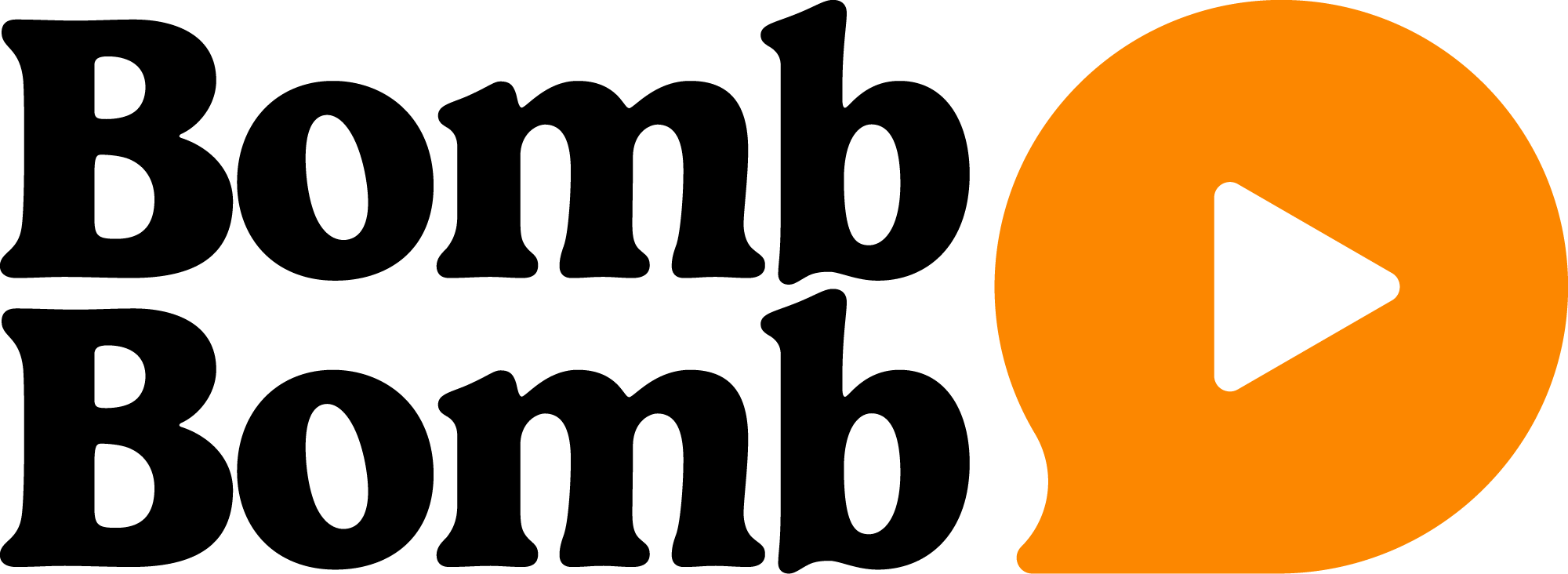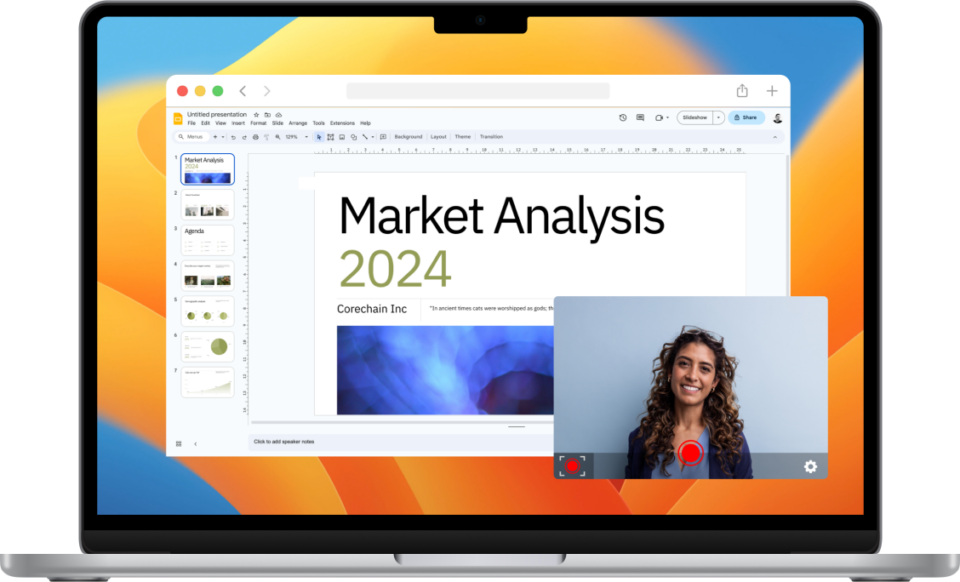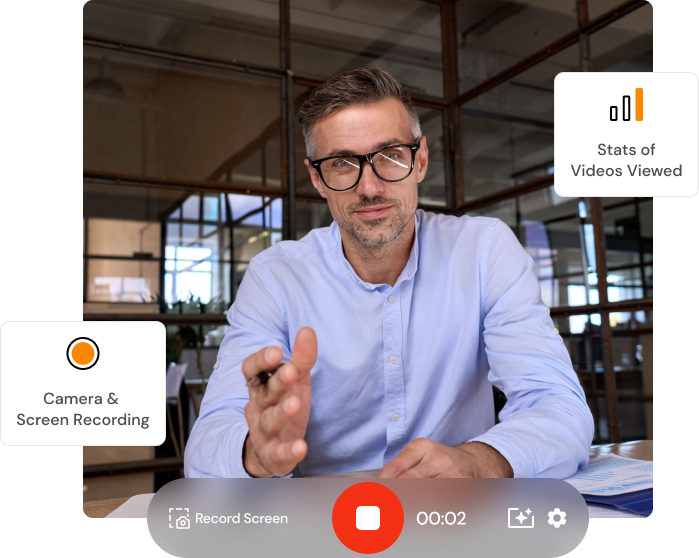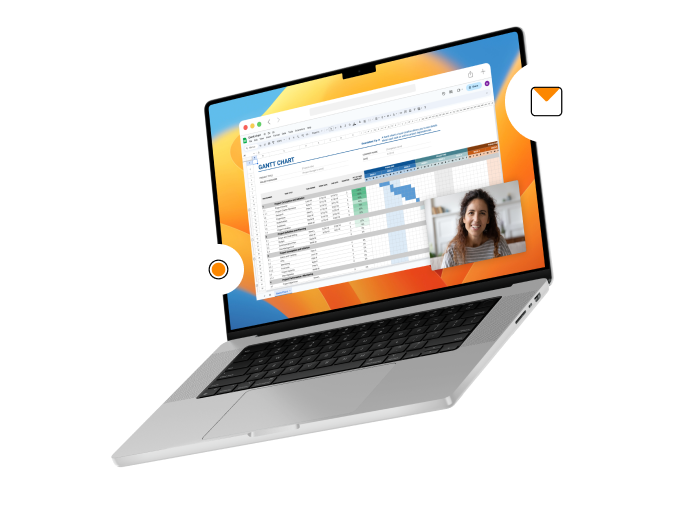70% fewer touches to generate an initial lead response.
A 2x improvement in response rate in a cold outbounding campaign.
A 65% lift in lead conversion when a video is played in a nurturing sequence.
90% report a greater ability to stay in touch over the long term.
Video messages are helping individuals and organizations of all kinds enjoy these results right now. Video rehumanizes your team members. It puts the messenger back into the message.
But where do you start?
All the messages you’re typing out and sending right now could be video messages. But not all of them should be.
Video messaging is a relatively new practice for most (though we and many of our customers have been at it for more than a decade). It’s incredibly powerful and transformative. But there seems to be more hype and bluster than norms and best practices.
Where can video have the greatest impact? Which messages from my team or company should include videos? How do we consistently record and send them? When can we send generic videos and when should we get truly personal?
These questions – and dozens more like them – have been a barrier for too many people and for far too long. That’s why we wrote Rehumanize Your Business (Wiley 2019). That’s why we wrote The Video Adoption Guide. That’s why we do live training every month. And that’s why we developed this Method.
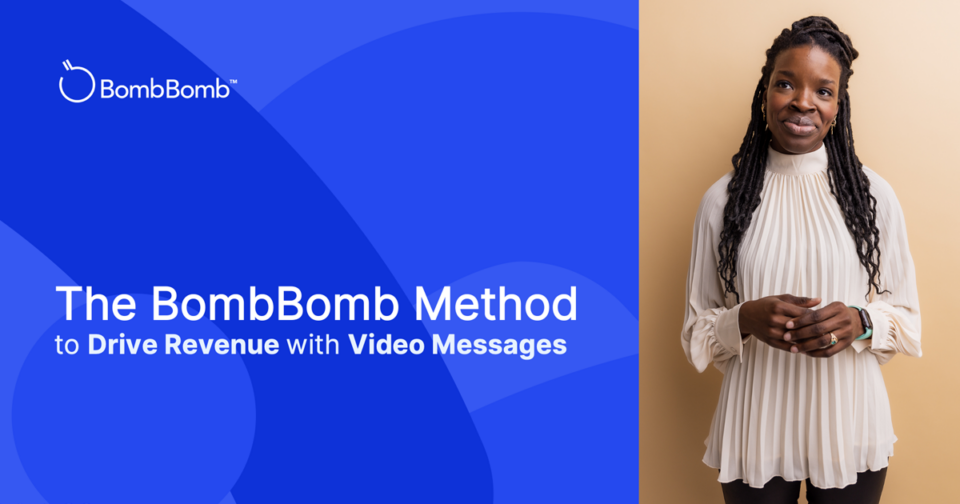
To drive revenue in the age of digital distance, digital distraction, and digital pollution, you need a process like The BombBomb Method.
It’s got two main parts and seven total steps. With it, you will create meaningful, measurable, and consistent business impact.
When people say things like “video messaging doesn’t work,” “I’m not a video email person,” or “I love video messages, but I don’t send them as often as I should,” it reflects the need for a system, process, formula, or method like this one.
Often, people “try out” video messages without considering where video is needed or what its business impact should be. Or they find success in terms of business impact, but they don’t send videos consistently.
The former is a reflection of the relative youth of the video messaging movement; with few norms and standards, more education is needed. The latter is a reflection of human nature and level of business maturity.
The BombBomb Method helps with both.
Here it is in short:
- Consider your key stakeholders (prospect/customer, recruit/employee, strategic partners, etc)
- Identify moments in which video would help them move forward with you
- Prioritize those moments by business value
- Create a mini-map with the Who, What, When, and Where of your most valuable video messages
The breakdown and detail are all here in this post for you. And, as a takeaway, click here to instantly access a one-page summary for quick reference.
But before we proceed, a quick aside on the value of video messages …
Most of the moments in which you’re reaching out with digital messages to connect with, educate, engage, or move people are delivered as large blocks of faceless, typed-out text.
Relying on text alone for some of your most important and valueable messages is a disservice to you, your stakeholder, and your business. Because those messages are missing one of the most important aspects of effective communication: you.
Compared to text-based messages, expect videos to empower you and your team members with:
- Clearer communication (meaning isn’t just in what you say, it’s in how you say it)
- Human connection (people feel like they know you before they ever meet you)
- Higher conversion (building trust and demonstrating expertise makes it easier to say “yes”)
Clarity and connection convert. Especially when they’re mapped to specific business value and their consistent execution is laid out simply and specifically.
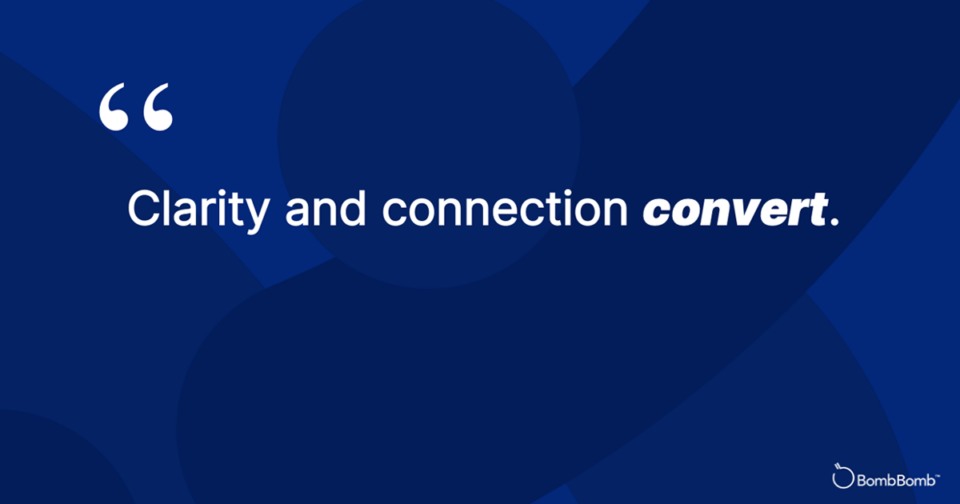
The BombBomb Method draws on The 4 Stages of Video Adoption, which we detailed in our free, 124-page guide, The Video Adoption Guide (click for instant access). The benefit here is that it’s even simpler and more actionable, because it breaks out the essence of Stages 1 and 4.
Get out a notebook or notepad. Open up a new browser window. Pick up your digital stylus. Open up Evernote. However you prefer to capture and process ideas, get it out or open it up. You’ll want to work along through this interactive post and process.
In the end, you’ll have a very specific framework for using video messages to drive revenue in your business.
How to Drive Revenue with Video Messages
What are the best use cases for video messages? When should you send video instead of text? The answers to these questions should be anchored in your business. Specifically: in how your business creates value, delivers value, and drives revenue.
Part One of The BombBomb Method helps you walk through this in three steps.
- 1 List out your key stakeholder groups
- 2 List out the moments that matter most by stakeholder
- 3 Prioritize the moments by revenue impact
Once you’ve identified the moments in which video can deliver meaningful impact, how do you get it done? More importantly: how do you get it done consistently?
Video isn’t perfect. Video isn’t magic. It won’t “work” every time. Nothing does! But it will provide a meaningful and measurable lift when you map it to business value and execute with an intentional and repeatable process.
Through the four steps detailed below, Part Two of The BombBomb Method helps clarify the Who, What, When, and Where details with a Mini-Map for each video message you want to record and send. This clarity is the foundation for consistency.
- 4 Who (One-to-one or One-to-many)
- 5 What (One-off or Evergreen)
- 6 When (Time-blocked, Triggered, or Automated)
- 7 Where (BombBomb.com, Gmail/Outlook, CRM/Integration, or BombBomb Mobile)
Part One: Your Business Assessment
AIDA. Awareness, interest, desire, and action. This traditional sales funnel has fundamental flaws. They’re detailed in Chapter 3 of our Wall Street Journal bestseller, Human-Centered Communication. Get an enhanced, digital copy of it free by clicking right here.
That chapter is based on the philosophy, strategies, and tactics of Jacco van der Kooij, Founder of Winning by Design. Part One is based on your reflections on your business relative to a more human funnel that Jacco introduced to us: The Bow Tie Funnel. You can see it below …
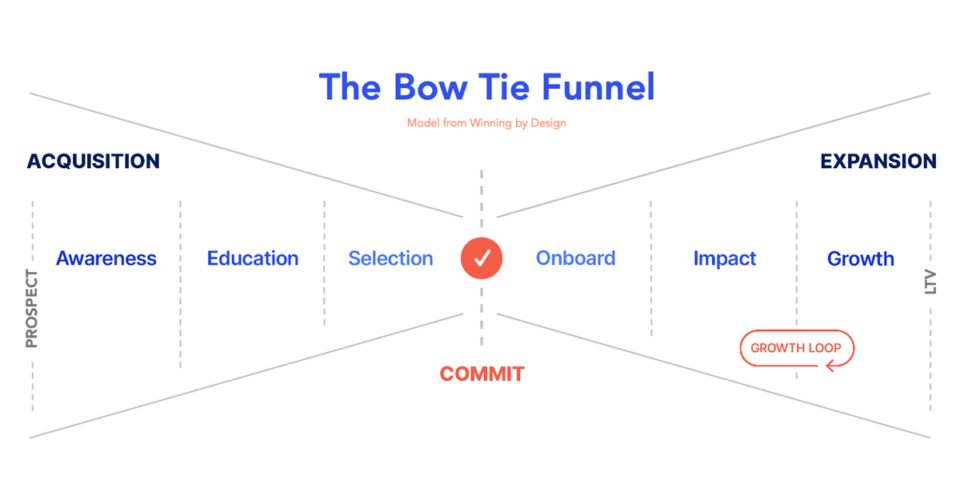
Because the traditional funnel ends with action, it’s transactional. The Bow Tie Funnel puts action or commitment in the center. It’s relational. The goal is to help people “yes” their way into the growth loop on the far right side. The small, medium, and large “yeses” people need to think, feel, or say ar achieved by promising and delivering recurring impact. Here, impact could be read as value or benefit. A solved problem. An opportunity created.
Whether you’re a one-person shop, the leader of a 2,200-person team in a multi-billion-dollar organization, or something in between, your business or organization can be mapped to The Bow Tie Funnel.
Further, this funnel is the same for each of your stakeholder groups, which leads us to the first of seven steps in The BombBomb Method …
Step 1: List out your key stakeholder groups
Your business likely relies on three primary sets of stakeholders. Here they are in Acquisition / Expansion format:
- Lead or Prospect / Client or Customer
- Recruit or Target Hire / Employee or Team Member
- Potential Strategic or Referral Partner / Active Partner
Of course, there are many more – peers, competitors, community, investors, board members, suppliers, vendors, media, etc.
Think about all the stakeholders in your business and list them out, then consider their current journey across The Bow Tie Funnel.
Step 2: List out the moments that matter most by stakeholder
Prioritize the top three stakeholder groups on your list and consider their funnel journey from the earliest stages all the way into a growth loop. What you’re looking for are moments that matter to that person. Inflection points. Decision points. Points at which things change. Points of confusion or frustration. Points of promise and achievement. Memorable moments. Moments of “magic” … or of “misery” (in the words of Shep Hyken, featured in Chapter 10 of Human-Centered Communication).
Many of those moments are improved by sending video messages in place of faceless, typed-out messages. Why? Clearer communication, human connection, and higher conversion.
And there are two ways to think about the right moments for video messages:
- Points of friction and failure (preventing people from moving forward quickly, confidently, or at all)
- Points of human value (capitalizing on the medium of video and overcoming the limitations of text)
Points of friction and failure are points at which people slow down or stop in the process. They have questions or concerns or confusion. They struggle to decide. They’ve not developed enough trust or confidence in you to proceed. They’ve not prioritized the problem or opportunity you can help with.
No matter the issue, these points show up in conversion metrics like lead response rate, call connect rate, appointment set and hold rates, or overall lead conversion rate. They continue through purchase and are reflected in retention rates, referral rates, expansion rates, and similar.
Points of human value are points in which typing out the message is noticeably worse for you, for the other person, and for the business outcome. The best way to communicate in nearly every circumstance is in person and face to face. Because it’s impossible to be in front of everyone all the time, video is a great substitute.
Here are three points of human value that deserve a video:
- Personal connection (establishing connection with someone you’ve not met or you’ve just met or re-estabilshing connection with someone you’ve not seen in a while)
- Emotion and tone (the sincerity behind thank you, good job, congratulations, apologies, bad news, caution, concern, and other emotionally charged messages is better managed through your face, voice, and body than through the keyboard)
- Detail or complexity (answering questions in laypersons’ terms by talking them through or by showing-and-telling with a screen recording is faster for you and better for them)
A video message can’t save every moment. It won’t always produce the “yes” you need or want. But by looking at business impact and thinking about the value of face-to-face videos or show-and-tell screen recordings, you’ll immediately find opportunities to improve your outreach … and your results.
The key to an effective video in the moments that you identify in this step: thinking about what each person needs to feel, think, and do in order to move forward and take the next step with confidence.
This requires your knowing, understanding, and empathizing with the people you’re reaching out to – as well as knowing and understanding what they’re likely feeling and thinking in that moment. Especially if you’re at a point of friction or failure, the gap between what they’re likely feeling and what they need to feel, think, or do must be closed if you’re to create progress and momentum.
With the human-to-human touch of video and this clarity on who you’re reaching out to, when, and why, you’ll send a video that conveys not just the right message, but – more importantly – the right intent and encouragement. Again, clarity and connection convert.
Step 3: Prioritize the moment by revenue impact
You listed out your stakeholders. You listed out moments that matter to them and, as a consequence, to you. These are moments in which you need people to feel, think, say, and act in a way that says “yes” – driving them through The Bow Tie Funnel and driving revenue as a result.
If you could only improve one moment in one stakeholder funnel in particular, you’d likely work on the one with the biggest revenue impact, right? That’s where to start with video.
Prioritize your top five to seven moments that matter by stakeholder, by point in the funnel, and by measurable outcome.
For example: Stakeholer = Prospect, Point in the Funnel = Education, Measurable Outcome = Appointment Hold Rate.
What are you communicating at that point now? How? And how might you add warmth, confidence, trust, and the promise of value in a video message instead?
Another example: Stakeholder = Customer, Point in Funnel = Onboarding, Measurable Outcome = Doing the Second Thing They Need to Do.
People are buying. But they’re not achieving success – or not doing so in a timely or consistent way. It’s because they’re not doing the next thing they need to do, but their inaction reflects poorly on you, your product, your service, your team, and/or your recurring revenue. How can you create more engagement, more clarity, and more urgency in those first couple of days or weeks to set them up for success? Consider orienting customers or introducing your team members, systems, processes, tools, or platforms with video messages.
By now: you should have a list of moments in which improving the speed or consistency of a “yes” would be valuable to your business. If you don’t, walk back through Steps 1, 2, and 3 of Part One.
It doesn’t have to be perfect. But it does need to be clear. Ideally, it would also be measurable. And, of course, it should fit the criteria of friction/failure or human value.
Once you’ve got at least a few specific ideas, it’s time to map the video recording and sending process with Steps 4, 5, 6, and 7 in Part Two.
Part Two: Your BombBomb Mini Map
One of the key issues you’re addressing with The BombBomb Method is assuring that the video messages your team’s sending are mapped to moments of impact on your business and moments that matter to your stakeholders. That’s the essence of Part One.
Another key issue: how are you going to record and send it with ease, effectiveness, and consistency? Different moments may have different answers.
Here in Part Two, you’ll take your most valueable moment and get clear on who the audience is for that video message, what type of video message is best, when recording and sending the message fits into the day, and where in the BombBomb ecosystem you’ll record and send from.
You’ll simply map out that who, what, when, and where. When those details are left to chance, you – and your team members – are far less likely to be successful or consistent.
The goal here isn’t to create a video message mini map for eight or ten different moments that matter. It’s to do one or two. Add others on only after you get consistent recording and sending for that first moment or two.
Toward the close of this post, you’ll learn three aspects of consistency to consider before stacking new video messages onto your process.

Step 4: Who (One-to-one or One-to-many)
A one-to-one video is recorded for and sent to – you guessed it! – one person at a time.
One-to-many videos may sent to three or four people at once. Or thirty or forty people. Or three or four hundred. Or to thousands.
An appointment confirmation or follow up? Typically one-to-one.
72-hours-out details about an event with 72 attendees? Definitely one-to-many.
Congratulations to a friend who just got a new job? One-to-one video.
Congratulations to your 257-member team on achieving your quarterly goal? One-to-many video.
It’s not a complicated idea. But it’s important to be clear about who you’re recording for and sending to.
Step 5: What (One-off or Evergreen)
A one-off video is bespoke. Recorded in the moment for a specific situation. It’ll only be sent once.
If it’s a one-off, one-to-one video, it’s truly personal; you greet the person by name and answer their specific question or address their specific situation.
If it’s a one-off, one-to-many video, it’s for a specific group at a specific moment in time for a specific purpose.
An evergreen video is recorded once and used over and over again as necessary or appropriate. It may be sent to one person at a time – or to many people. But it can be used again tomorrow. Or next week. Or every time something in particular happens. Evergreens save time and add scale to your video outreach.
With an evergreen video, you don’t greet anyone by name, but you speak as specifically as possible to the type of person receiving it and the moment or context in which you’re sending it.
For example, you might set up a static list in your CRM in which two criteria are true, one is false, and a number falls within a specific range. You might set up or refresh that same list once per quarter. You could record an evergreen, one-to-many video to engage or help people who fit those particular details. You can even mention them in the video so they know it’s timely and relevant to them as individuals. Send that video to all the people who fit those details each quarter – new people, but same video.
Likewise, you may set up a dynamic list in your CRM with those same four details. Each time someone gets added to the list, an evergreen, one-to-one video message could go out to that person.
In general, a one-off video is most effective. You can be specific. It feels more personal. It’s literally a gift of your undivided time and attention in service of one or more people.
The tension is in volume versus value. If you’re sending the video several times per day or you’ll use the video for a long period of time, an evergreen video may be the right choice. If you want someone to feel highly valued and well served, a one-to-one, one-off video is a great choice.
There’s no single “right” choice for everyone. Take a cost/benefit approach to the tradeoffs between one-off and evergreen.
Step 6: When (Time-blocked, Triggered, or Automated)
This step captures one of the most important and overlooked aspects of successful video implementation and adoption. When are you going to record and send the video? What’s the process?
Different video use cases or moments that matter call for different approaches.
Time-blocked video recording and sending is as it sounds: it’s the “power hour” or it’s every Tuesday from 1-1:45pm. You put a block on your calendar to record and send that type of video.
For example, you might spend 45 minutes once each week to send one-off, one-to-one video messages to each of your open sales opportunities. Thank them for their engagement and investment of time so far, remind them where the conversation left off, remind them of their desired outcome, and provide a call to action on the next step – all in a very personal manner and each in just a couple of minutes.
Depending on the video use case, the block may be daily, weekly, or monthly. It may be 5 minutes, 25 minutes, 90 minutes, or any other duration of time. For example, I time block most of an afternoon a couple of times a year to send thank you and check in videos to professional connections like customers, podcast guests, and strategic partners.
Triggered videos are recorded and sent in reaction to the moment arriving. Every time (something in particular) happens, I send a video within (a specific amount of time). For example, happy birthday. When you notice on LinkedIn or Facebook that a person meaningful to you has a birthday, you send a quick video that day. It could be evergreen (not greeting them by name or noting anything personal about them), but it’s better as a one-off just for that person.
Other potential triggers: setting an appointment, following up after an appointment, receiving or providing a referral, responding to a new online lead, answering a question that would be difficult or time-consuming to type out, celebrating a milestone or achievement, honoring an anniversary, getting a contract signed, etc.
Notice that triggers can generally be characterized as date-based (2-year service anniversary of an employee) or event-based (just got asked to make a personal introduction between two people in your network).
Automated videos are evergreen by default. You record them once and set them up to send over and over to each person who reaches the moment it’s recorded for. These fit best in a relatively orderly system or process. And its especially valuable across a team of people running the same system or process.
BombBomb has many direct integrations to support this type of sending, including in Salesforce, Salesforce Marketing Cloud, Total Expert, and Lasso. And the “Copy for Email” function of every video in a BombBomb account can be used to place a video in other systems and platforms. For example, HubSpot.
Click here to learn more about BombBomb for Teams.
Step 7: Where (BombBomb.com, Gmail/Outlook, CRM/Integration, or BombBomb Mobile)
One of the greatest strengths and benefits of a platform like BombBomb is a common and shared recording, sending, and tracking experience from phone to tablet to laptop and from inbox to CRM to our own web app. This can also create some paralysis if you’re clear on the use cases or moments for video, but you’re not clear on where you’re going to record or send.
You can record or screen record videos, share a video from your library, and check out your tracking feed in Gmail, Outlook, and Google Chrome.
You can Quick Send or use the drag-and-drop email composer (for newsletters, offers, etc) by logging into the web app at BombBomb.com.
You can record and send through dozens of CRM and platform integrations, like Salesforce, Zendesk, Outreach, Total Expert, Follow Up Boss, HomeBot, Zillow, and many more (see them here).
And, of course, you can use BombBomb’s 4.7-star Android or 4.8-star iOS mobile app.
As you map out your most valuable moments for video messages, consider which situation or platform fits for you best.
If you’re on the go and it’s a triggered, one-off, one-to-one send, consider the mobile app. If it’s a time-blocked, evergreen, one-to-one send, it may be best to do it from your CRM or another integrated environment. If it’s a time-blocked, one-off, one-to-many send to a segment of customers or to an internal team, it may be best to use the BombBomb web app.
As with other video mapping decisions, there’s no single “right” answer here. The goal is to make it clear to your team members and/or clear to yourself how you’re going to capitalize on the opportunity in a consistent way.
Examples: Video Message Mini Maps
Type it into a Google Sheet. Write it down on a notecard or sticky note. Draw it on your whiteboard. Whatever works for you: make a video message mini-map with the Who, What, When, and Where for your top opportunity.
Below are four examples, including a hypothetical scenario for each.
In the first, you’ve identified that increasing show rates for set appointments would be a significant benefit to your business. Promising value. Setting expectations. Having them feel like they know you before they meet you. A video message will help you do this more effectively – reducing failure by removing friction.
Because you have many appointments like this and they’re often very similar, you’ve opted to put an evergreen video into a templated and automatically sent email from your CRM exactly 48 hours before the appointment.
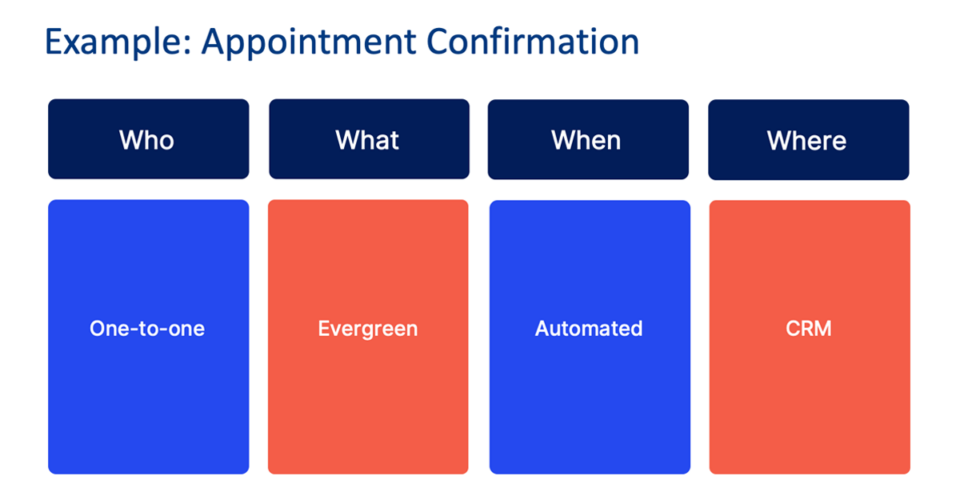
In this second example, you want to keep customers or clients in the growth loop of The Bow Tie Funnel. You want to stay in front of them in a way that makes you more memorable, provides helpful information, continues to position you as the trusted advisor, expert, or guide, and creates opportunities for people to respond to you.
You’ve opted for time blocking on the second Thursday of every month to develop and record a video email newsletter that you’ve built and templated inside your BombBomb account. Doing it with a video, rather than in text alone, capitalizes on a point of human value – personal connection.

The third example assumes that referrals are one of the most valuable opportunities in your business. With this mini-map, you’ve committed to send two videos every time you get a referral or a personal introduction to someone new. Video serves to reduce any friction and create personal connection early in a new relationship.
The first is a “thank you” to the person making the referral or introduction. The second is a personal introduction with a clear next step for the person you’ve been referred or introduced to. The referral or intro is the trigger. And the iPhone app gives you flexibility to respond quickly (and it’s probably your highest quality camera!).
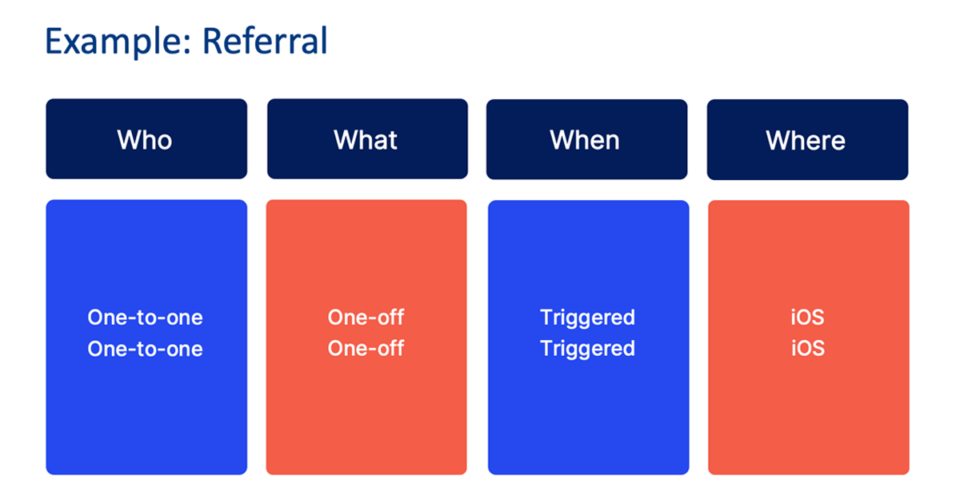
In this fourth and final example, you’re looking to save time and add efficiency. You get questions from your customers or team members that are much faster, easier, and clearer to address by recording or screen recording a video. Communicating in video helps break down detail and complexity better than in typed-out text.
In this case, I chose one-off per question and assumed it was for one person. In practice, you could record an evergreen video for a frequently asked question and use it over and over again. Or you could answer a question from one of your team members, but send it one-to-many to the whole team because the answer would be helpful to all of them.

Best Practices with The BombBomb Method for Video Messages
A few final thoughts here before you head off to implement what you’ve written down or typed up. Consider bookmarking this post for yourself.
And consider sharing the link to this post with others on your team or in your company. Adopting video messaging is a behavior change and transformation like any other. It requires clarity, discipline, and reinforcement. You can help each other.
Video Messages Aren’t About Video
Video messages are about making it easier to say “yes” to you. To the large, medium, and small opportunities, offers, or calls to action you’re putting in front of people.
A large or macro “yes” – Docusigning that six- or seven-figure contract. A few small or micro “yeses” – replying to your message, filling out the survey, making that personal introduction, scheduling and showing up for that appointment or call.
These are all conversions. No matter the size, they’re all driven by trust, reciprocity, understanding, and value. And, as noted at the top of this post, video messages deliver higher conversion.
Check out this episode or this episode of The Customer Experience Podcast for examples of macro conversions driven by video.
By focusing on points of friction and failure, as well as points of human value, you’re focusing on moments that benefit most from the clearer communication and human connection video messages provide.
Well-mapped video messages make it easier for people to say “yes” with their feelings, thoughts, words, and actions.
Start with One Video Message
Only one. Just one.
You likely see many opportunities to record and send video messages. As noted off the top, anywhere you’re sending text, you can also send a video. But that’s overwhelming and it may not be effective.
Also: just one video message mapped to a meaningful business outcome can give you an ROI multiple.
Prioritize five or seven moments that matter. Map them all. Start with just one …
Don’t Add a Second Until You’re Consistent
Here are the three aspects of consistency to watch for before adding new video messages to your process:
- Consistency in sending a video in the moment (sending a video nearly every time the moment arrives)
- Consistency across the team (the majority of team members capitalizing on the moment nearly every time)
- Consistency in results (achieving the desired outcome or effect most of the time)
For help with the second aspect, check out Stage 2: Self starting on page 88 of The Video Adoption Guide.
For help with the third aspect, check out Stage 3: Structure starting on page 104 of The Video Adoption Guide.
Start with one. Implement. Adopt. Refine. Experience results.
Stack More Video Messages Over Time
You created your priority list for a reason: to implement them over time and to transform steadily your digital communication and the outcomes you’re driving.
When you follow The BombBomb Method, you’re far more likely to find success both in adopting video messages and in driving revenue with them.
More Help with Video Messages
Click here to instantly access a one-page summary of The BombBomb Method for quick reference.
Click here to get a free, enhanced digital copy of our Wall Street Journal bestseller, Human-Centered Communication.
Click here to get instant access to The Video Adoption Guide, the free, 124-page guide that inspired this Method.
Click here to learn more about BombBomb for Teams.
Click here to schedule a conversation with us about video messages and video automation for your team.
Click here to try BombBomb absolutely free for two weeks with no credit card info required.
